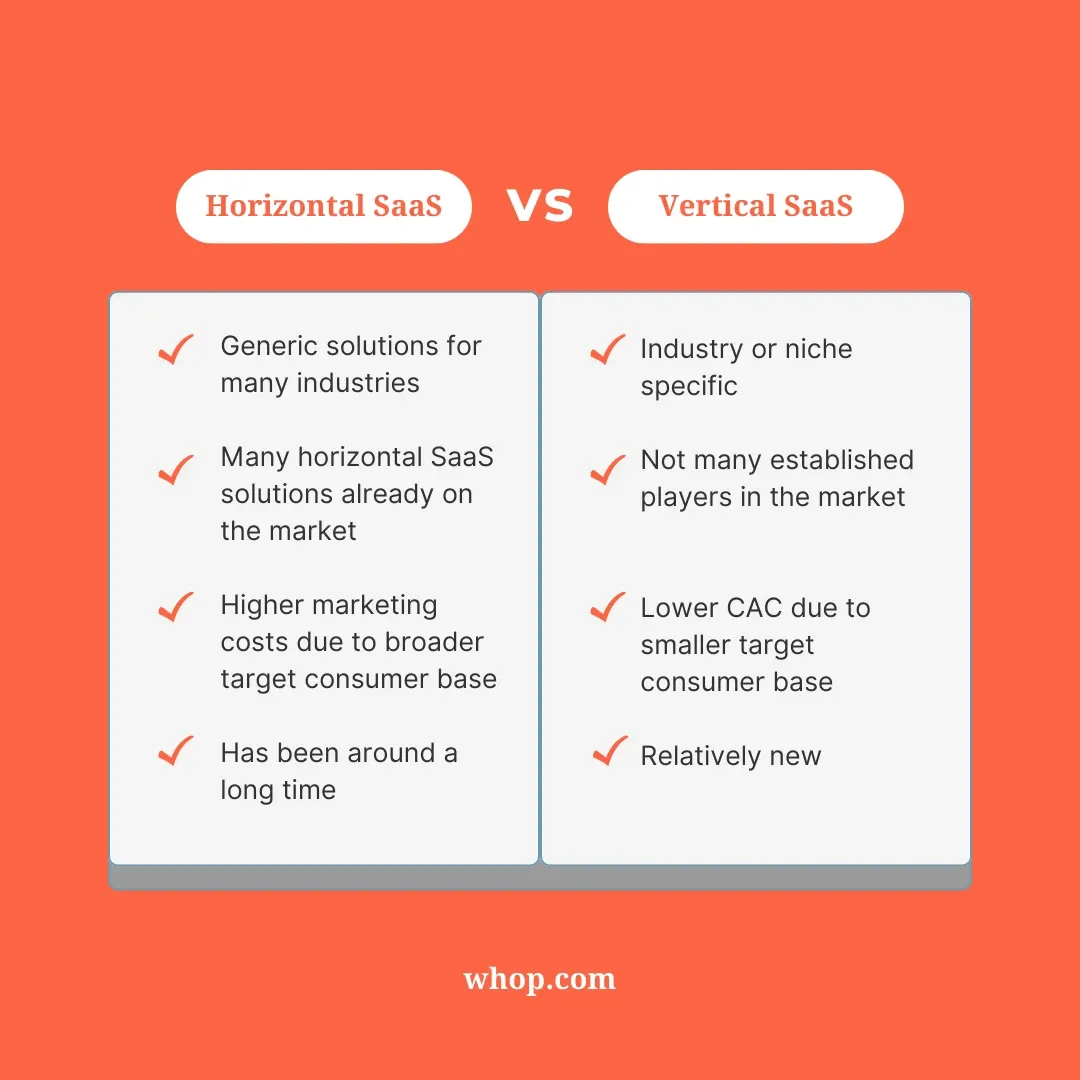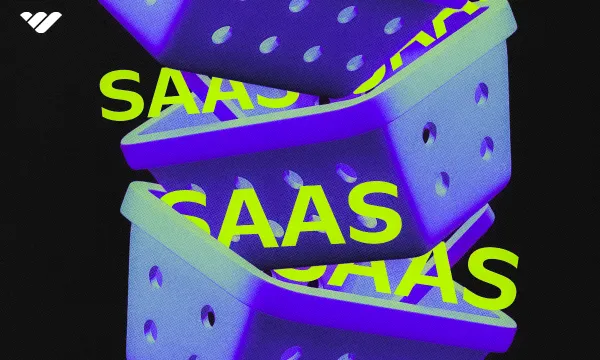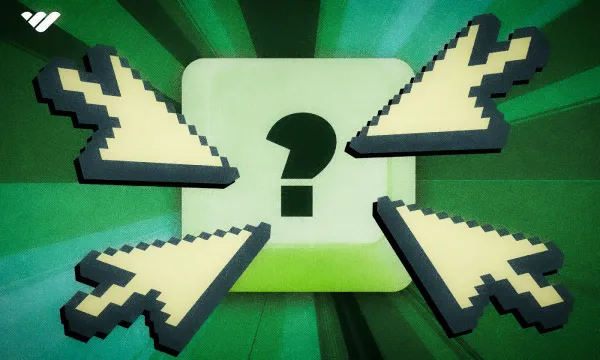Vertical SaaS is growing at record-breaking speeds - so much so that according to the SaaS institute, in the past few years vertical SaaS companies have grown fourfold, and they aren’t slowing down. For SaaS companies, this means needing to understand and keep up with how the SaaS landscape is evolving in order to keep up with the landscape and sustain their business. For entrepreneurs, this means an opportunity to join a rapidly growing market.
In this article, we are going to look at what vertical SaaS is, how it differs from horizontal SaaS, the key benefits and challenges of vertical SaaS for vendors, and examples of existing vertical SaaS solutions. If you’re interested in understanding the world of vertical SaaS, read on!
Wondering what SaaS is? Start with our complete guide to SaaS, covering everything from the history of SaaS to how it works and how you can run your own SaaS business.
What is Vertical SaaS?
Vertical SaaS is a software-as-a-service solution for a very specific industry or niche. As such, vertical SaaS solutions focus on addressing the pain points and/or needs of certain industries, such as retail, insurance, healthcare, financial services, or manufacturing. By focusing on specific niches, the vertical SaaS solution can address the unique challenges and needs of that industry.
For example, a key challenge for the healthcare industry may not exist in the financial services industry. So, with vertical SaaS built with one (or at most a few) industries in mind, businesses can have a SaaS solution tailored to their requirements.
Characteristics of Vertical SaaS
There are a few common characteristics of vertical SaaS, and they are as follows:
- Industry Specific: Specialized features and functions for specific industries or niches.
- Targeted Audience: Focusing on a niche means targeting a smaller market segment, leading to higher conversions and ROI, and lower CAC!
- Expertise: Niche-focused SaaS requires a high level of expertise in the specific area, resulting in highly effective solutions.
- Customizable: In addition to being industry-focused, vertical SaaS is also usually highly customizable to suit the needs of the user and their workflows/processes.
What is the Difference Between Vertical and Horizontal SaaS?
So we now know more about vertical SaaS, but what is horizontal SaaS? With vertical SaaS solutions being specialized and niche-specific, horizontal SaaS products are the opposite. Unlike vertical SaaS, horizontal SaaS is broad and appeals to a wide range of industries. Some examples of horizontal SaaS include marketing tools, CRM platforms, and accounting software.
As the product application range is wider, so is the target market. Therefore, horizontal SaaS companies can reach a larger customer base - but this also means that they may have to spend more on marketing and promotion as there is more competition than there is for vertical SaaS.

Vertical SaaS Examples
Vertical SaaS can exist in any niche or industry. As long as that niche/industry is in need of SaaS, then it could benefit from the increased focus of a vertical SaaS solution to meet its needs. Let’s take a look at some examples of successful vertical SaaS solutions, from financial services, to construction, and more.
Clear Care
Clear Care is a vertical SaaS CRM software for home care agencies. If Clear Care was purely a SaaS CRM, then it would be considered horizontal SaaS, but due to the focus on home care agencies, it is a prime example of vertical SaaS. Clear Care helps agencies with their electronic health records - everything from e-prescriptions to automated labs. The software also includes a patient portal, where companies can access the patient’s history and account.
Blend
Blend is a digital lending vertical SaaS platform. It began as a solution for mortgage applications, but now offers a wide range of products for financial services firms, including deposit accounts, insurance marketplaces, consumer loans, and credit card applications.
Procore
A vertical SaaS solution for the construction industry, Procore specializes in project management, allowing users to edit and design drawings, spec sheets, plans, and more, from anywhere in the world at any time. Procore can also be used for tracking, bidding, planning, and scheduling projects. Plus, contractors can access their work across multiple sheets.
HotSchedules
HotSchedules is a vertical SaaS for the restaurant industry. It is an employee communication and scheduling tool, through which team members can pick, swap, and release their shifts. It also assists automated shift pick-ups if employees have noted that they want more shifts. Further than this, HotSchedules allows the restaurant to track its stock management, staff management, inventory, and more.
Benefits and Challenges of Vertical SaaS
The vertical SaaS market is expected to continue to grow rapidly in the coming years. In fact, according to Apptension, the vertical SaaS market is predicted to reach $157.4 billion by 2025. That’s a CAGR of 23.9%!
This growth is largely driven by its sharp focus on specific solutions, coupled with lower CAC and higher conversion rates. Small businesses in food services, construction, and healthcare have struggled to use traditional horizontal SaaS models whilst also managing industry-specific regulations and processes. Vertical SaaS solves these challenges for them through their tailored solutions. So, this large market of SMEs who have long been ignored by larger software companies is turning to vertical SaaS.
As with everything, there are pros and cons of creating a vertical SaaS solution. If you're considering venturing into the Vertical SaaS business, consider the following:
Vertical SaaS Pros
Firstly, as an industry or niche-specific software solution, vertical SaaS meets the needs and solves the problems of its target audience, creating a better product for the end-user. With an improved product, users are more likely to be impressed by its functionality and spread the good word about their SaaS.
This goes hand-in-hand with increased efficiency. Vertical SaaS meets the needs of its targeted area, and that’s that. It does everything that the user needs it to do, without trying to solve the problems of any other industry using the software. By focusing solely on the specific industry, the solutions the software offers are much more efficient than those of horizontal solutions. Plus, vertical SaaS can integrate with existing software, requiring less development.
Finally, the vertical SaaS market is much smaller than horizontal SaaS, meaning that there is less competition. As a result, vertical SaaS creators spend less on marketing their software, as the pool is smaller, and their consumer base much more specific.
Vertical SaaS Cons
One of the biggest challenges facing vertical SaaS vendors is customer expectations. Customers want low-cost software solutions, and they usually want it to integrate with their existing software. They also do not want to have to deal with another payment solution. So, customers are looking for an all-in-one SaaS solution to take care of all their needs. When creating your vertical SaaS, make sure that you tick all the boxes to reduce the risk of churn.
The other challenge is the size of the market. While this is also a pro for vertical SaaS as marketing expenses are smaller, it means that the lead pool is limited to those within your chosen niche, and you may exhaust your lead pool. To combat this, consider how your SaaS can help the businesses with your niche to grow, or consider expanding to explore similar niches (i.e if your SaaS focuses on healthcare, consider venturing into wellness).
The Future of Vertical SaaS
Vertical SaaS is a strong, growing market, and we can only expect to see more companies entering the vertical SaaS industry as small to medium-sized businesses search for tailor-made solutions to meet their needs and solve their challenges.
So, if you’re interested in starting your own vertical SaaS business, begin by researching your niche. Find a small, underserved corner of the market and create a SaaS solution that meets their needs and makes their lives easier.
Then, when you’re ready to embark on your SaaS journey be sure to join Whop. Whop offers a SaaS subscription management service that takes care of all of your SaaS business needs. Whop’s business dashboard is full of features to boost your SaaS journey, from affiliate management to upsells, cancellation offers, annual subscription options, and more. Plus, you can increase customer retention with automated emails and 24/7 customer service.
👉 Whatever your SaaS solution, Whop is your perfect partner. Sign up today in less than 10 minutes and begin your business journey!



![The Best SaaS Subscription Management Software [2024]](/blog/content/images/size/w600/2023/11/SaaS-management.webp)

